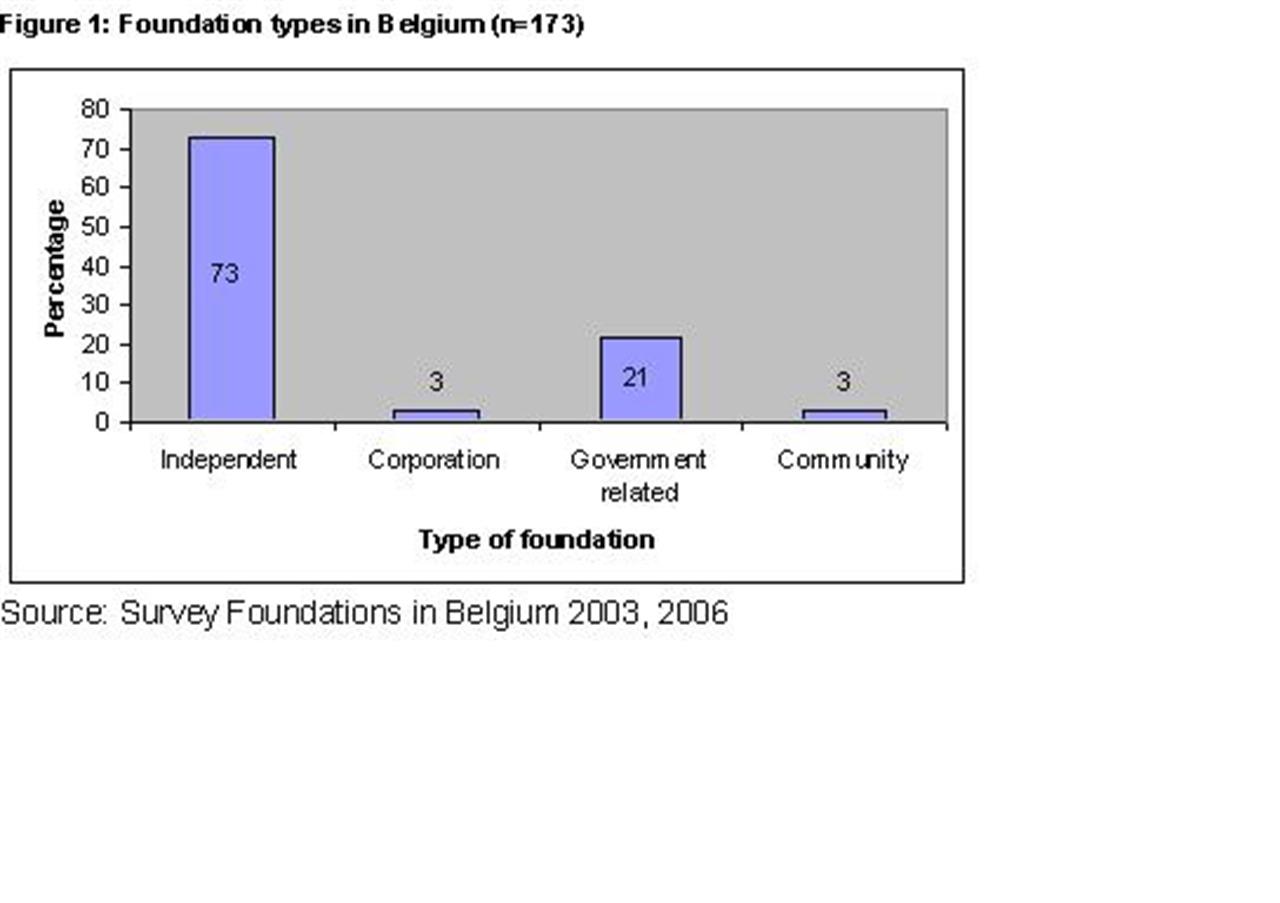According to the 2008 Report Feasibility Study on a European Foundation Institute – Final Report (University of Heidelberg, Centre for Social Investment and Max Planck Institute for Comparative and International Private Law, 2008), in Belgium there are 665 foundations, of which 400 are considered to be public benefit foundations (2005 data).
As another Report on foundations in Belgium highlights (Gijselinckx, Franchois, and Van Opstal, Foundations in Belgium, Hoger instituut voor de arbeid, 2008), foundations are regulated by the 2002-ratified Law on Non-Profit Organizations, International Non-Profit Organizations and Foundations, which regulates both the public benefit foundation and the private foundations.
According to the same Report by Gijselinckx, Franchois, and Van Opstal (2008), most of the foundations covered by the conducted survey is independent (73%); 21% is related to the government; 3% is set up by corporations, and the same percentage is represented by community foundations (see table in attachment).
Public benefit foundations employed the equivalent of 5,320.7 FTE workers (2005 data); paid staff is mostly active in the sector of education (61.2% of the total FTE units in public benefit foundations); the health care and the social action sector follow, with 11% and 10.6% respectively (see table for the differences among regions).
Table 1: Distribution of salaried employment in public benefit foundations in Belgium in the year 2005 (FTE)
|
Brussels |
Flanders |
Wallonie |
Belgium |
|||||
|
ETP |
% ETP |
ETP |
% ETP |
ETP |
% ETP |
ETP |
% ETP |
|
|
1. Culture, sports and leisure |
155,9 |
8,2% |
208,4 |
8,1% |
14,0 |
1,6% |
378,2 |
7,1% |
|
2. Education and research |
1 117,6 |
59,0% |
1 963,4 |
76,2% |
174,4 |
20,5% |
3 255,4 |
61,2% |
|
3. Health
|
322,5 |
17,0% |
16,7 |
0,6% |
246,1 |
28,9% |
585,3 |
11,0% |
|
4.Societal services |
79,2 |
4,2% |
364,2 |
14,1% |
121,1 |
14,2% |
564,5 |
10,6% |
|
5. Defence of rights and interests |
18,0 |
1,0% |
0,0 |
0,0% |
0,0 |
0,0% |
18,0 |
0,3% |
|
6. Other activities |
200,2 |
10,6% |
23,1 |
0,9% |
296,0 |
34,8% |
519,3 |
9,8% |
|
Total |
1 893,3 |
100,0% |
2 575,9 |
100,0% |
851,5 |
100,0% |
5 320,7 |
100,0% |
Source: Centre d’Economie Sociale, ULg
The biggest employers in this field are scientific research funds; the firsts are: the Fond National de la Recherche (FNRS), with 1,000 FTE employees; the Fonds voor Wetenschappelijk Onderzoek (FWO) – Vlaanderen, also with 1,000 FTE employees; the Study Centre for Nuclear Energy, with 570 FTE workers; the Institute of Tropical Medicine Antwerp, with 310 FTE workers.
69% of foundations’ paid workforce is female.
Instead, as far as volunteering in foundations is concerned, the percentage of men and women is approximately the same.
According to Gijselinckx, Franchois, and Van Opstal (2008), assets of Belgian foundations amounted to more than 1 billion € in 2005. The top-15 foundations in terms of assets account for more than 948 million €.
2005 foundations’ revenues amounted to more than 550 million €; the top-15 foundations as far as income is concerned covered almost 198 million €.
In 2005, foundations spent more than 561 million €; the expenditure top-15 foundations spent almost 202 million €.
35% of the foundations in Belgium operates by providing grants and awards and prices to third parties; 29% manages project under its own management.
Belgian foundations are mostly active in the arts and culture (28%), in the health care (26%) and in the education and initial training sector (23%).
Si può usare la Carta docente per abbonarsi a VITA?
Certo che sì! Basta emettere un buono sulla piattaforma del ministero del valore dell’abbonamento che si intende acquistare (1 anno carta + digital a 80€ o 1 anno digital a 60€) e inviarci il codice del buono a abbonamenti@vita.it

